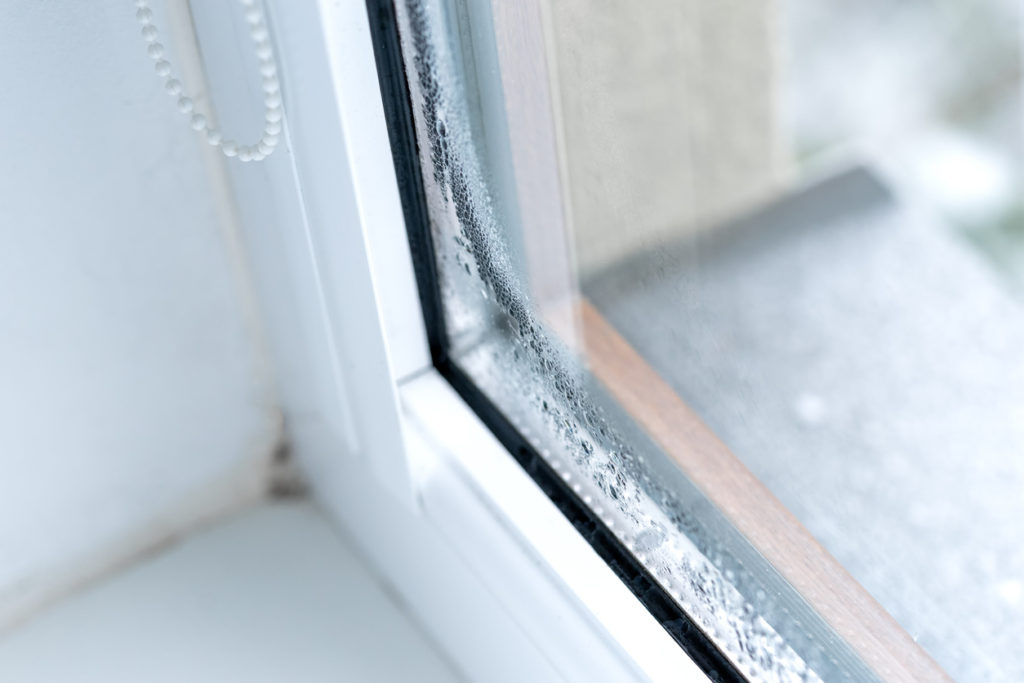Unfortunately, the age of your windows doesn’t always determine how prone they will be to condensation
Both old and new windows are susceptible to this household nuisance.
We’ll walk you through what window condensation is, what causes it, and a few quick fixes below:
What is Window Condensation?
Window condensation is a simple scientific process that occurs when the moisture in the air turns to liquid and settles on your window’s surface or gets trapped between its layers of glass. This unwelcome phenomenon leads to dampness, mold, rot, corrosion, and a long list of other issues that could be structurally damaging, as well as potentially harmful to your health.
What Causes Condensation on Windows?
Window condensation can occur for a multitude of different reasons, but in general it’s brought on by a discrepancy in temperature between the inside of your home and the outside world. When warm air meets a cool surface, condensation on windows quickly forms. Many routine household activities that cause excessive moisture in the air also lead to window condensation.
Some common culprits are:
- Showering, bathing or using a household sauna
- Cooking (especially on a gas stove)
- Washing and drying clothes
- Running a humidifier in the home (both through the central air system, and as a stand-alone)
- Washing dishes
- Watering household plants (especially if there are many in the home)
Basically any activity that disrupts heat levels in the house and supply moisture in to the air causes condensation on windows.
How to Get Rid of Condensation On Windows
Luckily, if ever this becomes a problem in your household, there are a few measures you can take to get rid of condensation on windows.
Open the windows and drapes
Even if it happens to be freezing outside, try bringing some air circulation back in to the room by opening the windows for about half an hour to balance out the humidity. After closing the windows back up again, keep the drapes open if possible. Closed drapes, especially those with a thicker fabric, can reduce airflow, causing window condensation to accumulate.
Lower the Thermostat
Another trick to leveling out the temperature is to turn the thermostat down by a couple of degrees. If window condensation is a common problem in your home, try playing with the temperature of the household a bit to find the optimal level that prevents moisture on windows. The greatest part? Turning down the temperature brings down the cost of heating as well!
Buy a De-humidifier
Since many household activities can’t be eliminated or even reduced, we suggest purchasing and running a de-humidifier in your home to bring down the levels of moisture in the home. Even with brand new windows, we suggest keeping moisture levels in the home at or below 40%. A de-humidifier can certainly help.
Make Sure to Keep Fans Running While Showering or Bathing
Ensure that there is a solid ventilation system installed in all bathrooms. In most households, there is a usually a member that enjoys lengthy showers and baths. While these generally lead to window condensation, if the area is properly ventilated, moisture on windows will be reduced.
Invest in Double-Glazed Windows
While old-style windows with just a single layer or glass leaves a thin veneer between the indoors and outdoors, double-glazed home windows are much more effective at insulation, and therefore keeping out the cold or heat. Among a wealth of other benefits, this additional layer keep help get rid of condensation inside windows, or to at least reduce it.
Think it might be time for new replacement windows? Contact Thermo-Bilt to schedule your FREE in-home consultation.


